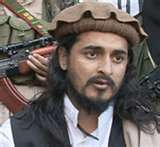To start things off from a big-picture perspective, check out the two graphics below, both courtesy of the Long War Journal. The first is an overall enemy SITEMP, with a rough estimate of Taliban "control/influence" in each province and district:
 While it's clearly not possible to summarize the complexity of the situation in any one district with just one shade of brown, it's still useful to ground our understanding of the situation in Afghanistan with a rough idea of what the Taliban's freedom of movement and level of influence are in each district. While I have yet to see a graphic representation of what level of influence/control the Afghan government exerts in each district, it's safe to assume (on the whole) that they are weakest where the Taliban is strongest - helping us see where we must focus the limited number of additional troops to provide enduring area security, improve governance, and build ANSF capacity.
While it's clearly not possible to summarize the complexity of the situation in any one district with just one shade of brown, it's still useful to ground our understanding of the situation in Afghanistan with a rough idea of what the Taliban's freedom of movement and level of influence are in each district. While I have yet to see a graphic representation of what level of influence/control the Afghan government exerts in each district, it's safe to assume (on the whole) that they are weakest where the Taliban is strongest - helping us see where we must focus the limited number of additional troops to provide enduring area security, improve governance, and build ANSF capacity.
The second graph (and must-read analysis by Bill Roggio from LWJ) provides a snapshot of Coalition casualties by province since 2001:
 Obviously, we must understand that this graphic (just like a graphic that shows attack levels) is not entirely representative of the true threat situation and dynamics on the ground. Casualty figures are often driven more by where we have the greatest number of troops "decisively engaged" (i.e. Marines in Helmand living and patrolling daily vs. German troops in N. Afghanistan whose ROE limits their ability to fight). Additionally, the way that individual units are interacting with the enemy (and the local populace) will drive how lethal the fight is in their area to a certain degree.
Obviously, we must understand that this graphic (just like a graphic that shows attack levels) is not entirely representative of the true threat situation and dynamics on the ground. Casualty figures are often driven more by where we have the greatest number of troops "decisively engaged" (i.e. Marines in Helmand living and patrolling daily vs. German troops in N. Afghanistan whose ROE limits their ability to fight). Additionally, the way that individual units are interacting with the enemy (and the local populace) will drive how lethal the fight is in their area to a certain degree. Additionally, it's equally important to understand that just because the Taliban is not overtly conducting attacks against ISAF forces doesn't mean that they don't exert control and influence in an area. Just as we saw in many places in Iraq, some insurgent/terrorist groups choose to focus their initial efforts more along the "security" line of operation, rather than the "military" line. Often, their security efforts are critical to establishing the necessary conditions for transitioning to a full-on guerrilla/offensive state. For example, although we currently see limited kinetic attacks (in the traditional sense) in N. Afghanistan, many reports indicate that the Taliban (and other groups) are conducting a sophisticated security campaign in some districts - focused on: 1) targeting/intimidating local government officials, tribal leaders, and others who are openly anti-Taliban; 2) establishing their own "intelligence network" within the area to understand the local dynamics and eventually select targets for military attack; and 3) targeting known "informants" and pro-ISAF forces who threaten their push for increased control in the area. We must constantly be watching for indicators of such security efforts as they are often the pre-cursor to more violence. They also pose a threat in and of themselves because they enable the insurgents' overarching IO efforts to convince the populace that they are the biggest game in town (more so than the local government, tribes, or ISAF forces).
I plan to discuss this concept further in another post this weekend, which will highlight the current situation in N. Iraq (in Mosul in particular) as an example of the transition from a more kinetic/offensive campaign of VBIEDs and IEDs to a more security-focused campaign of intimidation, assassination, and IO targeting local Iraqi government and ISF leaders. Both are almost equally dangerous in the long-run...
Getting back on topic, I'm looking forward to an in-depth discussion on the fight in Afghanistan at the operational and tactical level - informed by a deeper knowledge of the "ground truth" at the province/district level. Before I close, one quick request: If anyone has any good resources they can share covering the current enemy situation and operational environment at the RC (or lower) level, I would greatly appreciate you passing them along. Thanks...




.jpg)






No comments:
Post a Comment